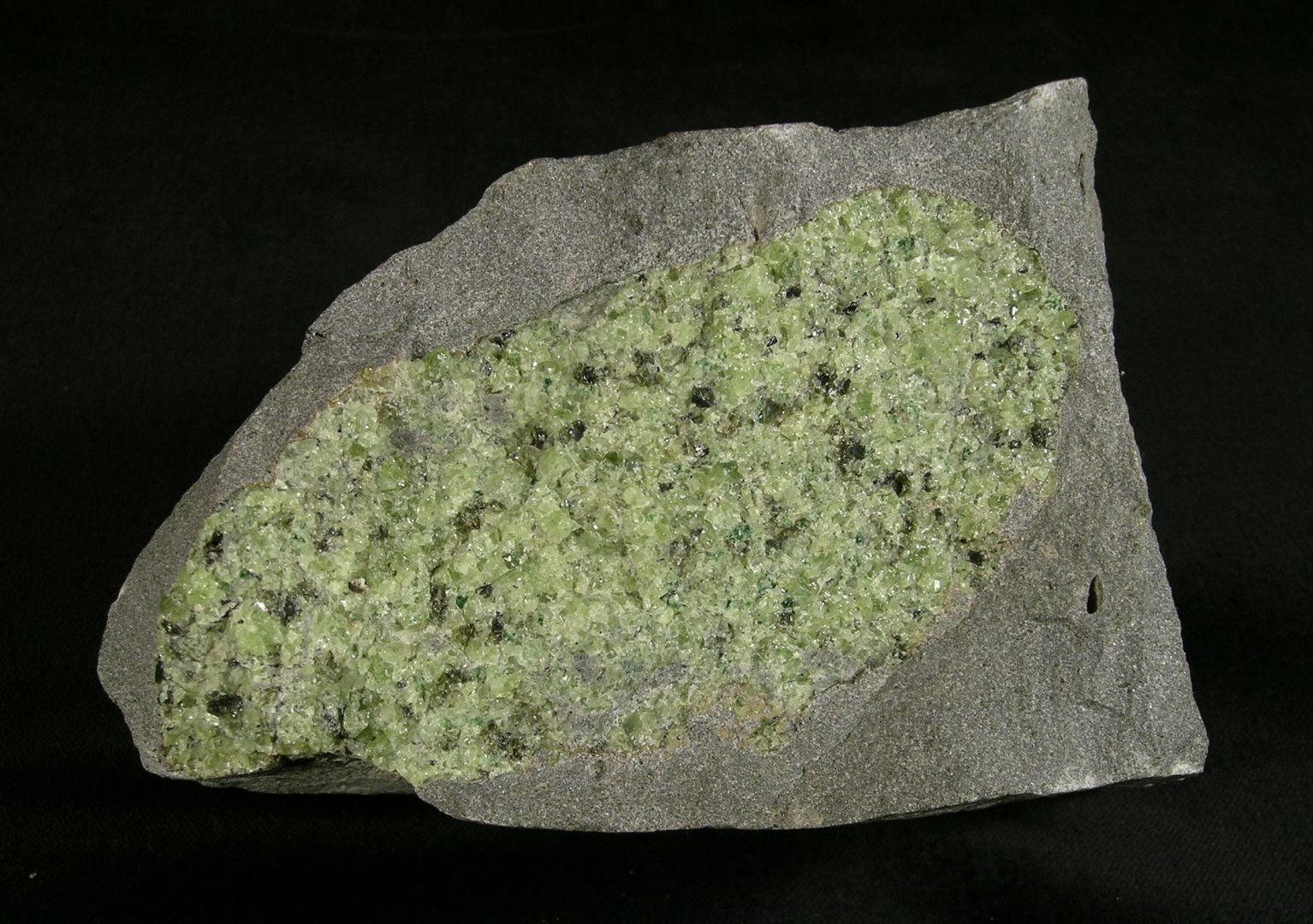MINERALS OF THE CARPATHIANS - 4. view / Călimani, Gurghiu, Harghita and Perşani Mountains
“Free rider” from the mantle of the Earth
Our earth is layered, but our knowledge of its mineralogy and petrology comes almost exclusively from the uppermost layer, the crust, which has an average thickness of 30 km. As the mantle under the crust has not yet been reached by deep drillings, its mineralogy and petrology can be deduced by indirect methods, i.e., geophysical (seismic) measurements and petrological experiments conducted under high pressure and temperature. However, some basaltic magmas form at great depths in the upper mantle, and they can enclose smaller or larger fragments from the mantle’s rocks during their upward journey. These can then travel to the surface of the Earth in the magma as “free riders” and thus become directly observable to geologists. These mantle-derived rock inclusions (in other words, xenoliths) often correspond to the otherwise very rare peridotite in the earth’s crust, which is composed predominantly of bottle-green forsterite grains.
In the picture: Peridotite xenolith in basalt, consisting mainly of forsterite, Racoş (Romania). Size: 13 cm. Photo by Béla Fehér.
